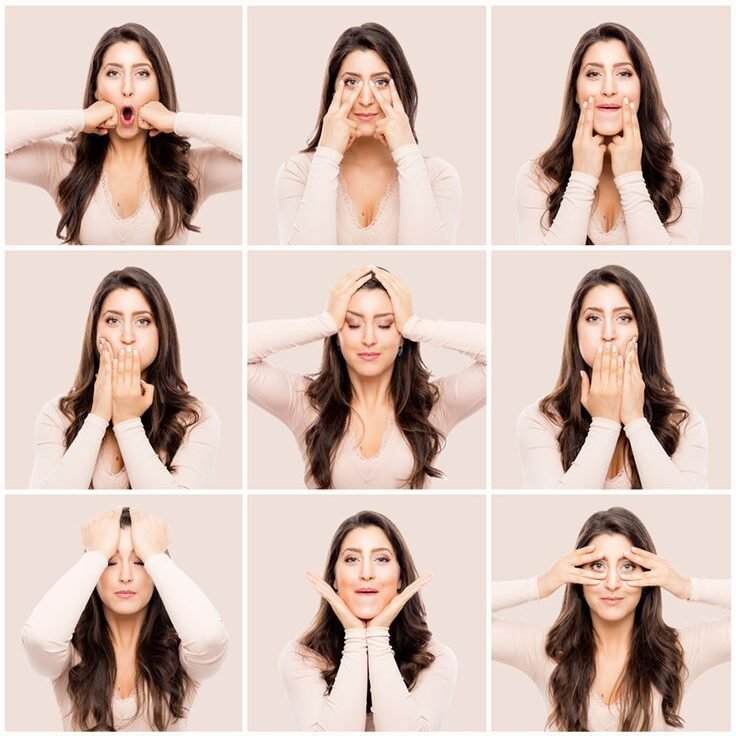In recent months, a new beauty trend has taken TikTok by storm: face yoga. With millions of views on tutorials and tips, the practice is gaining a lot of attention from influencers, skincare enthusiasts, and celebrities. The promise? To tone, lift, and reduce wrinkles—naturally, without the need for expensive treatments or invasive procedures. But as this trend continues to grow, the question remains: Does face yoga really work?
What is Face Yoga?
Face yoga refers to a series of facial exercises designed to target specific areas of the face. The movements involve gently massaging, stretching, and exercising the facial muscles, much like how traditional yoga exercises tone the body. Advocates claim that these exercises can reduce signs of aging by increasing circulation, improving skin elasticity, and strengthening facial muscles. Popular face yoga routines include “cheek lifts,” “jawline sculpting,” and “forehead smoothing.”
The TikTok Phenomenon
TikTok has become a major platform for beauty trends, and face yoga is no exception. Many users are uploading videos of their own face yoga routines, showcasing before-and-after results in a bid to demonstrate its effectiveness. Influencers and beauty experts swear by the benefits, often citing improvements in the appearance of their skin and a more youthful glow.
One popular video that went viral shows a creator performing a series of facial exercises, followed by a “reveal” that shows a visibly lifted face. Comments are filled with praises, with people eager to try it out for themselves.
Does Face Yoga Really Work?
While face yoga has gained popularity on social media, the scientific evidence supporting its effectiveness is still limited. Some studies suggest that regular facial exercises can indeed improve muscle tone, which may help reduce sagging and wrinkles over time. For example, a study published in the JAMA Dermatology journal in 2018 found that middle-aged women who performed facial exercises for about 30 minutes a day for eight weeks saw improvements in the fullness of their cheeks and a more youthful appearance.
However, the results may not be as dramatic as some TikTok videos suggest. Dermatologists caution that while face yoga might help improve circulation and muscle tone, it cannot replace professional treatments like Botox or fillers when it comes to more significant wrinkles and sagging. Additionally, improper techniques or excessive stretching can potentially cause fine lines or strain the skin, especially for those with sensitive skin.
Benefits of Face Yoga
Despite the lack of definitive scientific evidence, many people swear by face yoga for its potential benefits. Here are some of the possible advantages:
- Improved Muscle Tone: Regularly exercising facial muscles may help to firm and tone areas of the face, leading to a smoother, more lifted appearance.
- Enhanced Circulation: The gentle massaging of the face can boost blood flow, which could improve skin health and complexion.
- Natural and Non-invasive: Face yoga is a low-cost alternative to more invasive treatments like Botox, making it accessible to a wide range of people.
- Stress Relief: Like traditional yoga, face yoga can also provide relaxation and stress relief, as many exercises involve deep breathing and mindfulness.
Risks and Considerations
While face yoga is generally considered safe, there are a few things to keep in mind:
- Consistency is Key: Results take time. For visible changes, you need to commit to doing the exercises regularly over weeks or months.
- Proper Technique: Incorrect techniques, such as pulling or stretching the skin too hard, can cause harm. It’s crucial to follow expert guidance or tutorials from reliable sources.
- Not a Miracle Cure: Face yoga may improve the appearance of the face over time, but it is not a substitute for professional treatments like Botox, fillers, or facelifts.
Expert Opinions
Dermatologists have mixed feelings about face yoga. Dr. Shereene Idriss, a New York-based dermatologist, notes that while facial exercises can help tone the muscles, they are unlikely to eliminate deep wrinkles. She points out that factors like genetics, lifestyle, and sun exposure play a significant role in the aging process, and face yoga alone cannot reverse these factors.
Dr. Idriss also warns that overly aggressive facial exercises could lead to unnecessary stretching of the skin, especially in people with thinner or more delicate skin, which could actually lead to premature aging.

Conclusion
Face yoga may not be a miracle solution to aging, but it offers a non-invasive, cost-effective alternative to more expensive beauty treatments. For some people, it may provide subtle improvements in muscle tone and skin appearance, while for others, it might serve as a relaxing addition to their skincare routine. As with any beauty trend, it’s important to approach face yoga with realistic expectations and focus on consistency and technique.
For those looking for a natural and low-risk way to improve facial appearance, face yoga might be worth exploring—but as with anything, moderation and care are key. Whether it’s a quick TikTok trend or a lasting skincare practice, only time will tell how effective face yoga truly is.

